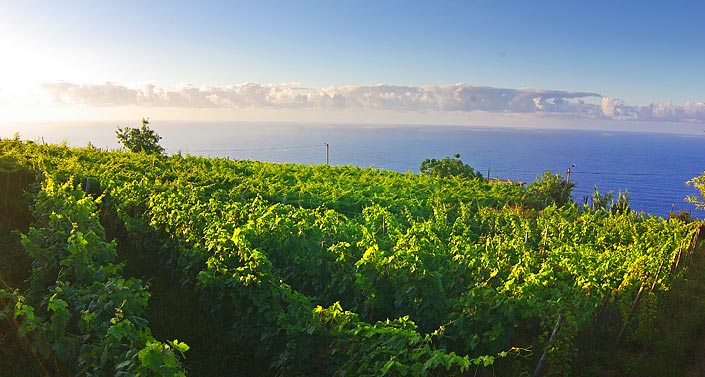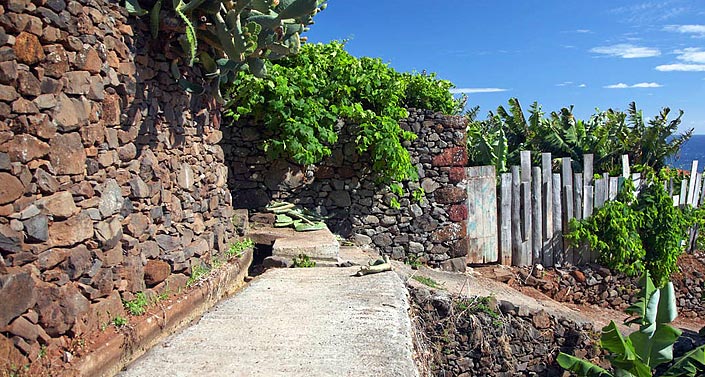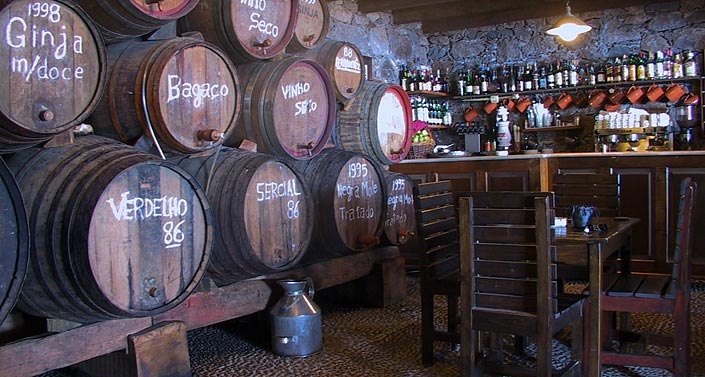Madeira Wine
With classic varieties and a distinctive taste derived from a unique process, Madeira Wine has become famous, indeed a market leader all over the world.The development of Madeira Wine began with a rich volcanic soil, benign climate and a variety of vines brought from many places in the world; one of the first being the Crete Candia Malvasia vine from 13th century Venice. Not entirely surprising as Venice was the dominant wine trader in the Mediterranean with operations spread all across Europe. By the 15th century, development of the Madeira Malvasia vine had started along with other varieties, which became very productive and widely recognized.
The Madeira Wine maturation process was discovered completely by chance; rough shipping conditions, sea breezes and particularly the heat between decks of tropical voyages developed different flavours in the wine, which became and tasted stronger. It is said that in the 16th Century for extended voyages Madeira wine was fortified to 20% alcohol in order to outlive sea conditions, however the constant rocking of the ship and passing over the equator (heating it up like a sauna) accelerated the wine’s ageing process. Indeed, long journeys were the accepted practice until 1794 when science was applied to the process.
Madeirans intrigued by the transformation began to experiment with different techniques, such as the heating method called estufa “hot sauna” where the wine is heated for up to 3 months to temperatures of 50ºC. Estufa tanks are now made of stainless steel and the process begins early with Malmsey and Boal wines, with a controlled process of longer fermentation for the drier wines like Verdelho and Sercial. The other traditional method is called Canteiros an ageing process where the wine is stored in barrels for about 20 to 100 years in natural heating. These methods are still being used today.
During the 17th century Madeira wine became a very desirable and increasingly well-known world wide; we must also thank the Pirates who helped in the distribution. During the 16th century French Pirates occasionally and brutally attacked Madeira and the Cargo ships taking with them Madeira’s treasures such as gold, silver, sugar and wine, the pirate’s wine of choice. Later these treasures were sold around the world, particularly in France where Madeira Wine became very well known.
In 1661 Princess Catherine of Bragança the daughter of Dom João, King of Portugal was married to Charles II, King of England. Madeira was then given permission to sell its wine directly to any British colonies. Likewise Portugal granted England free trade in any Portuguese ports in Africa, India and America, an arrangement that very soon became an extremely valuable trading partnership.
Madeira wine was so in demand by the 17th century that regular shipments were sent off as far as Boston, Baltimore, Philadelphia and New York. It was very much appreciated by important people like Benjamin Franklin, the Roosevelt families and was a favorite wine of the first President of United States George Washington. Everyday he drank a glass at dinner and it is historically known to have been used in many celebrations like in the signing of the American declaration of Independence July 4, 1776 and again when Washington D.C. became the capital of America.
During the 18th century the sugar and wine industry in Madeira was mostly owned by the English people who settled in Madeira since the 17th century, many of whom were born on the Island soon adapted to its customs and were able to speak both languages. But in 1852 disaster struck the Island: 90% of the grapes were destroyed by the mildew epidemic which made 70 English establishments quit the Island, then a few years later another pest Phylloxera vastatrix from America completely ruined the remaining plants. Years later only 15 of the established shippers remained in the Island to help the merchants through this difficult period.
Early in the 1900s Madeira wine was gradually revived and in 1979 the Madeira Wine Institute was founded (lnstituto do Vinho da Madeira). Its purpose was to carefully observe and direct all Madeira Wine production, controlling all its steps from the planting stage through fermentation until the last step of filling the bottle whereupon it would grant the official stamp of quality.
Today Madeira wine is very well known worldwide not just as a drinking wine but also as a terrific culinary wine. Madeira has quite a few important wine producers, such as Henriques & Henriques, the Madeira Wine Company belonging to the Blandy family, Vinhos Barbeitos, Vinhos Justino Henriques, Filhos, Pereira d'Oliveira Vinhos and Silva Vinhos who are all still making exceptional wines.
Nowadays, vineyards are still being cultivated all around the island, however the main vineyard areas of the largest wine producers are in areas such as Funchal, Estreito Câmara de Lobos, Ribeira Brava, Caniço, Porto da Cruz, Campanário, São Vicente and Ribeira da Janela. They all cultivate a great variety of grapes, such as Malvasia, Boal, Verdelho, Tinta (Negra-Mole), Bastardo, Terrantez, Sercial and some table wines like Muscatel of Setúbal. Porto Santo with its drier climate cultivates mostly Listrão, and some other varieties.
The Madeira Wine harvest is an intense activity and a great festivity, commencing mid-August through October sometimes all the way to November depending on the altitude. Traditionally grapes are hand picked and placed in wicker baskets and then transported to the Lagar (winemaking place) where the grapes are first pressed barefoot before a mechanical pressing machine is used. Today it is quite common to still see grape pressing by foot, however it’s mostly done by local farmers who still follow the tradition.

































